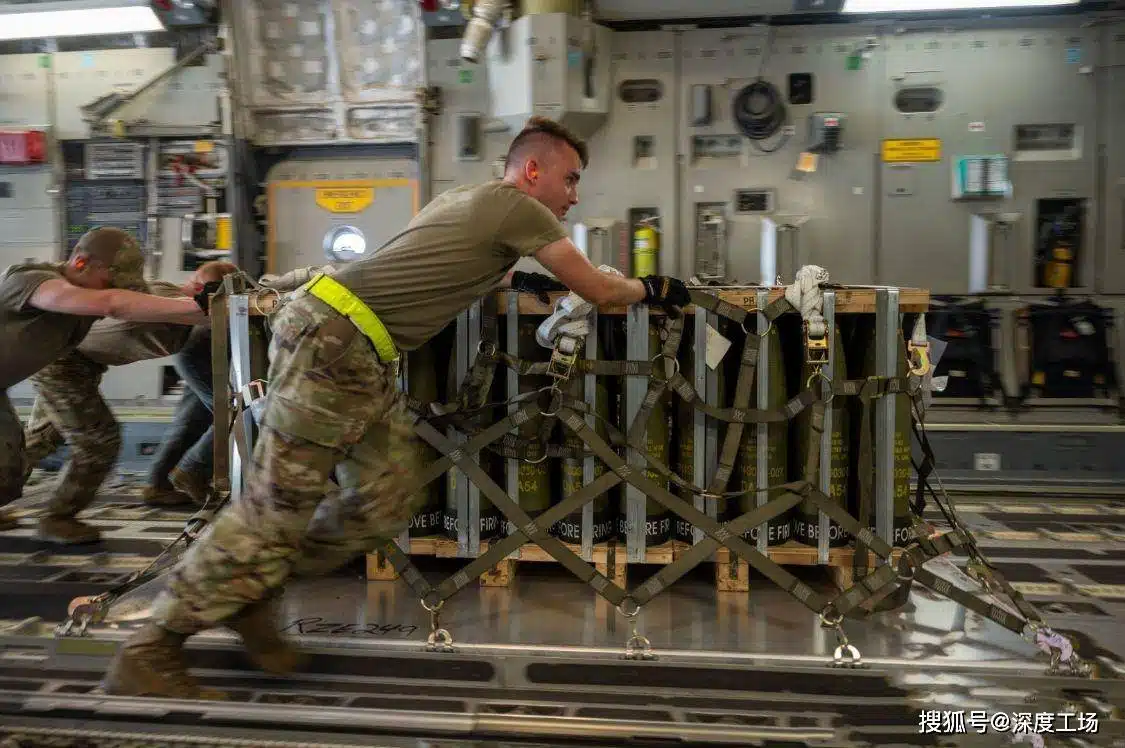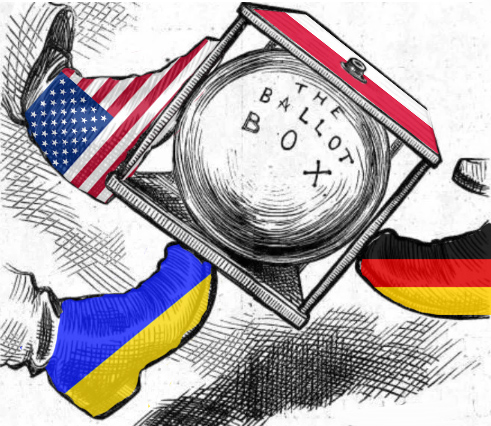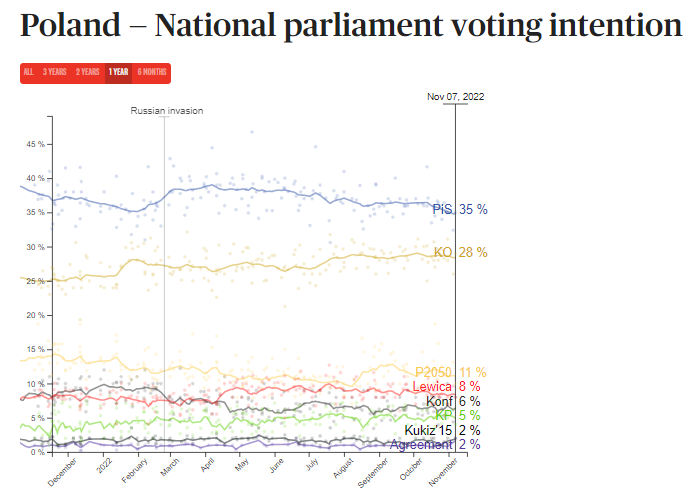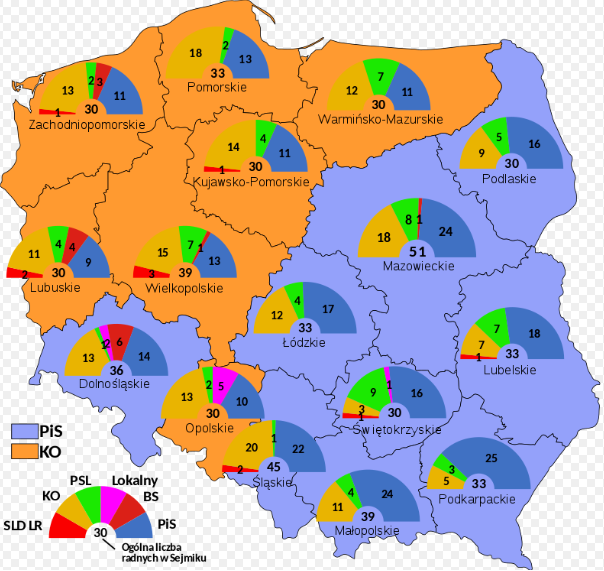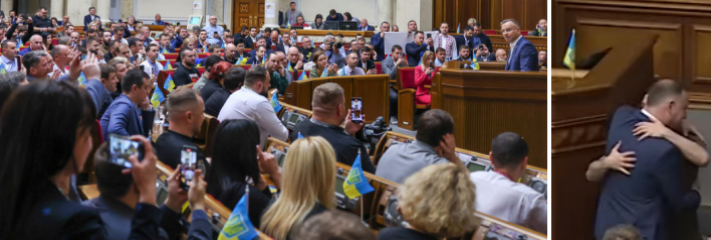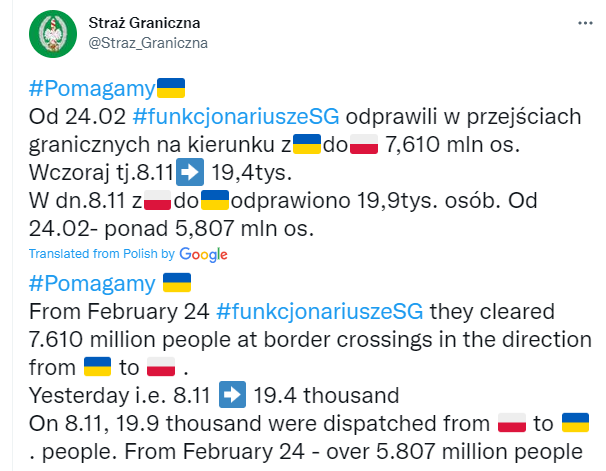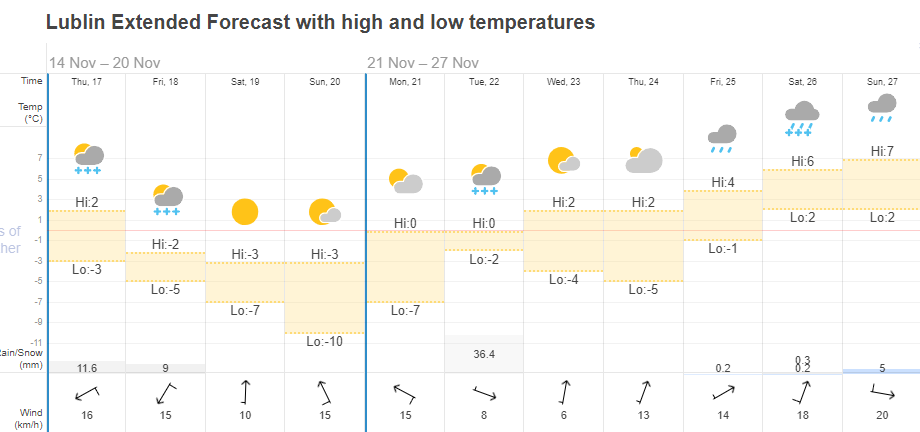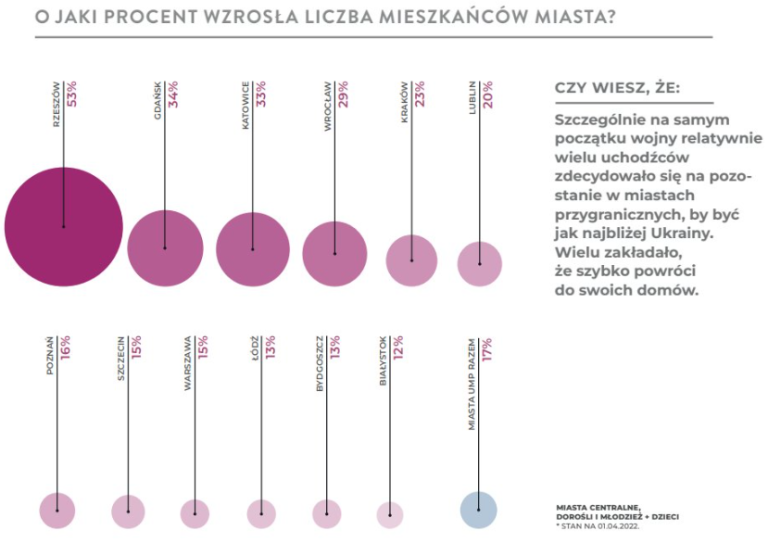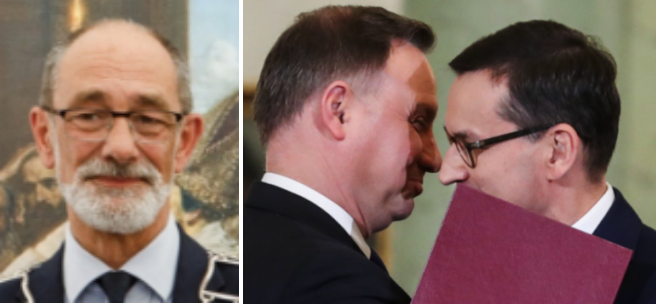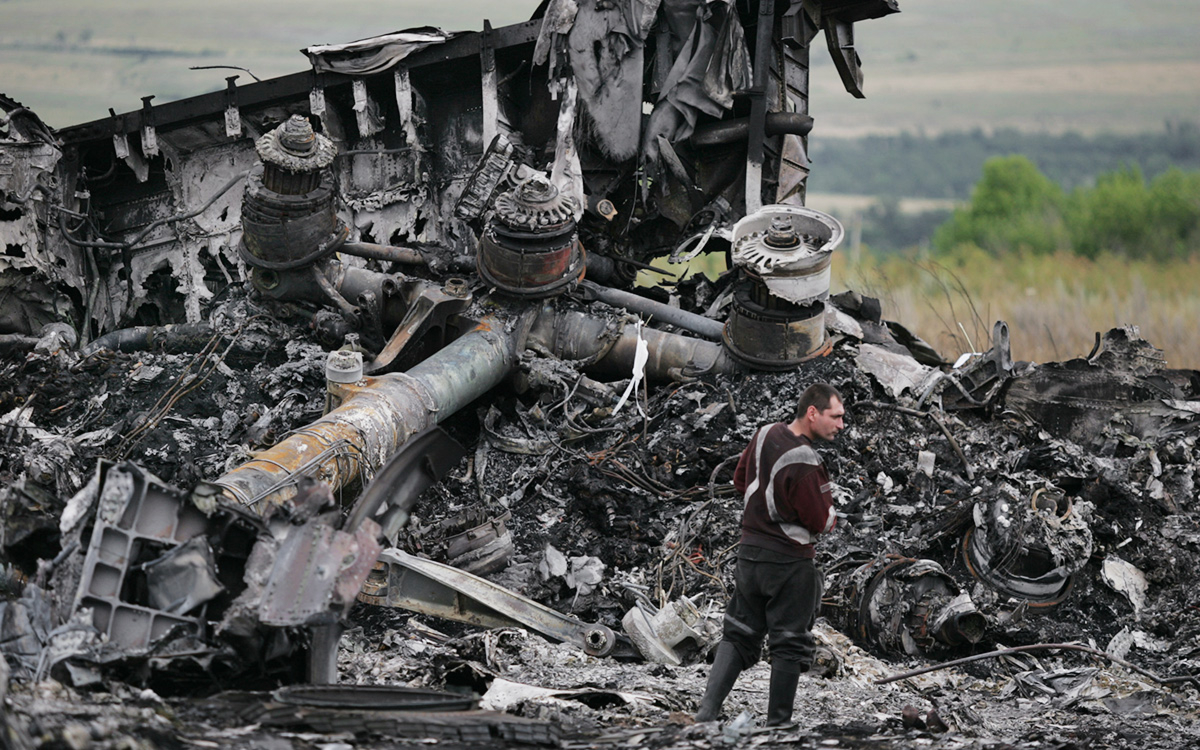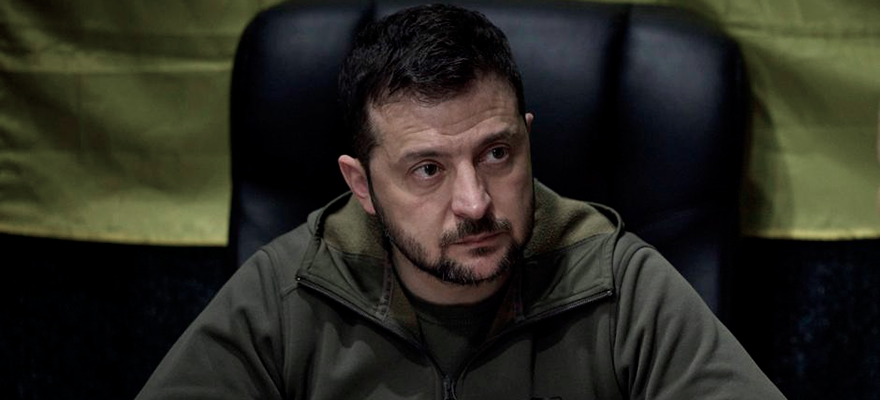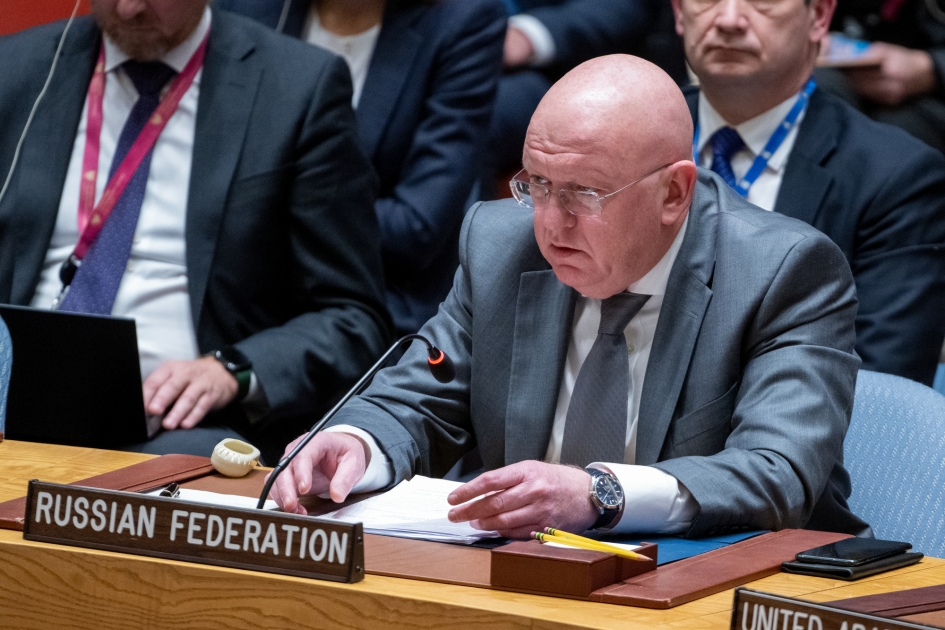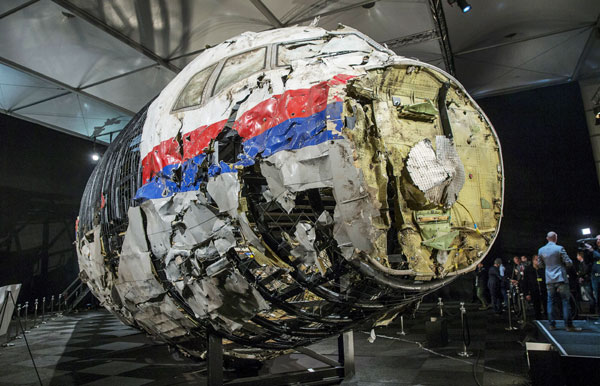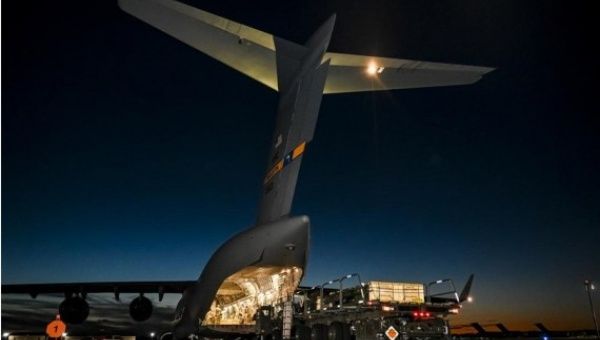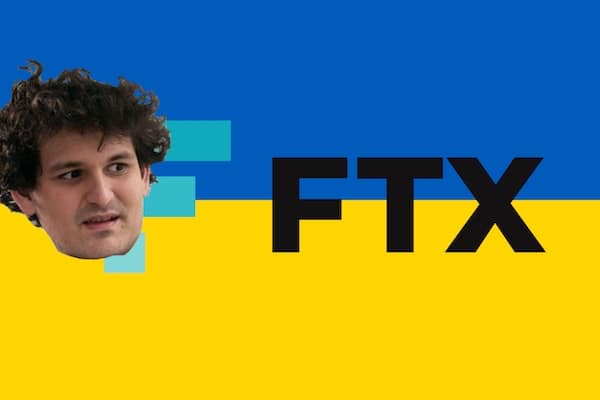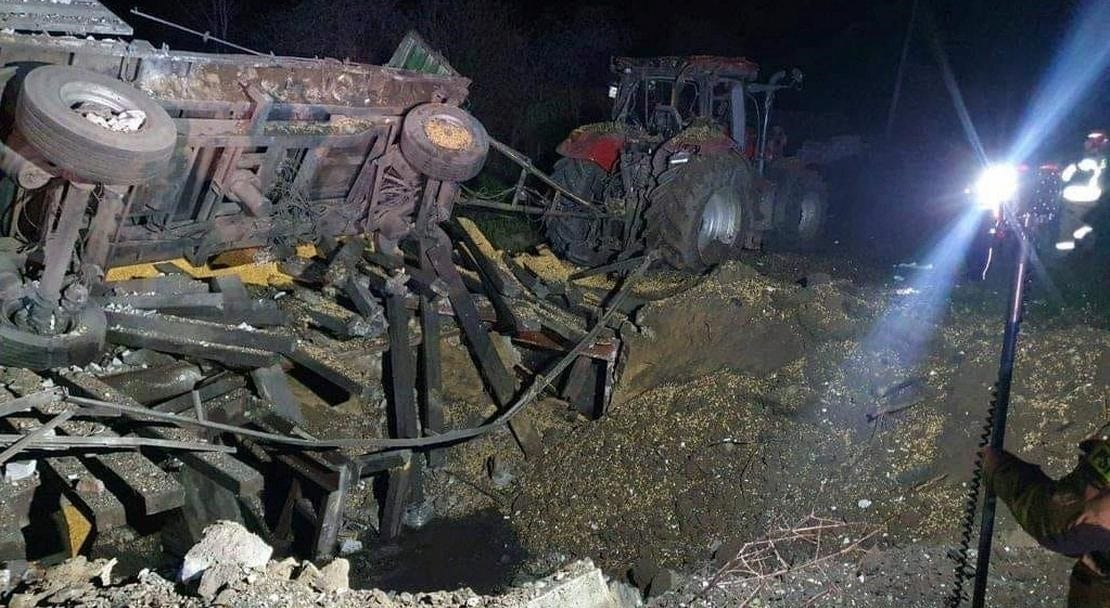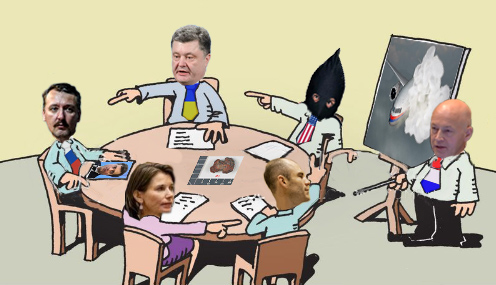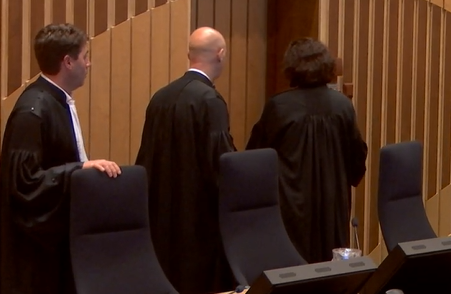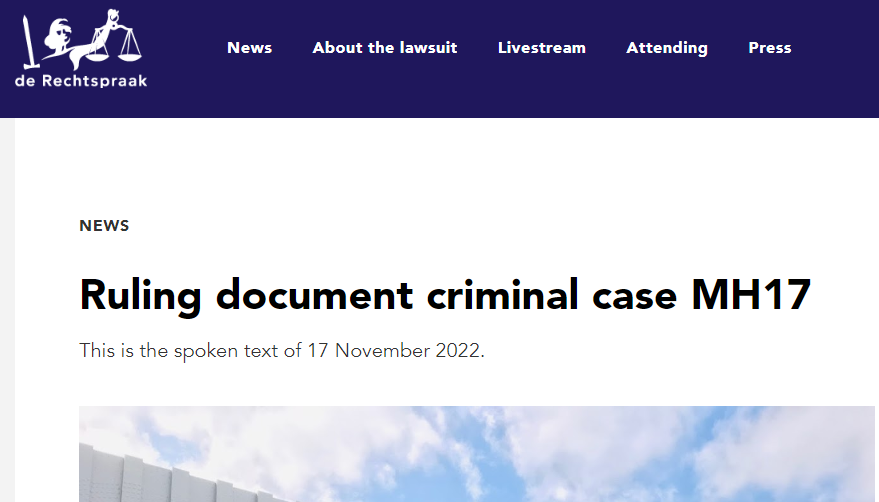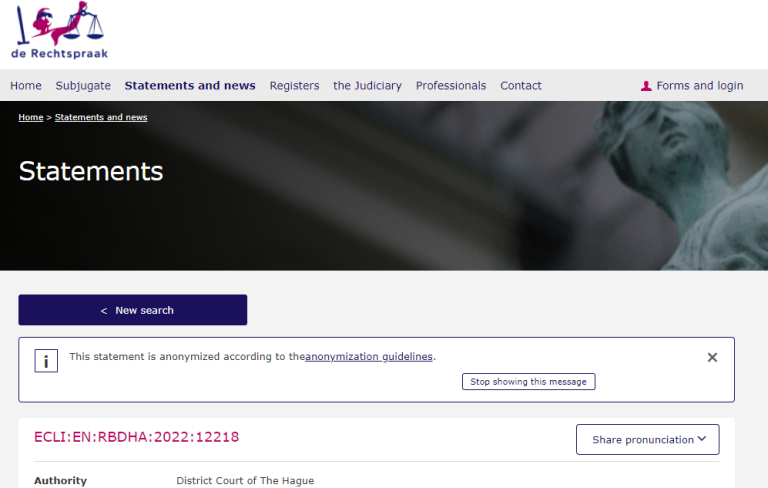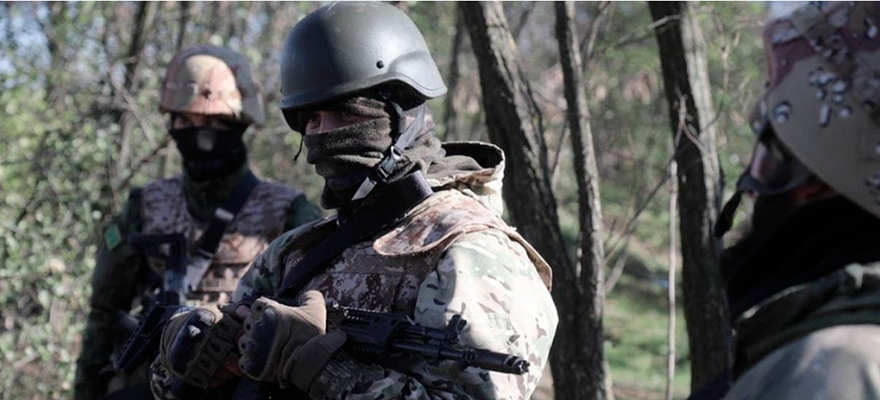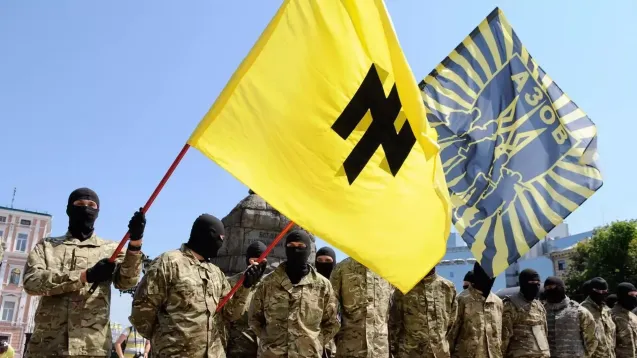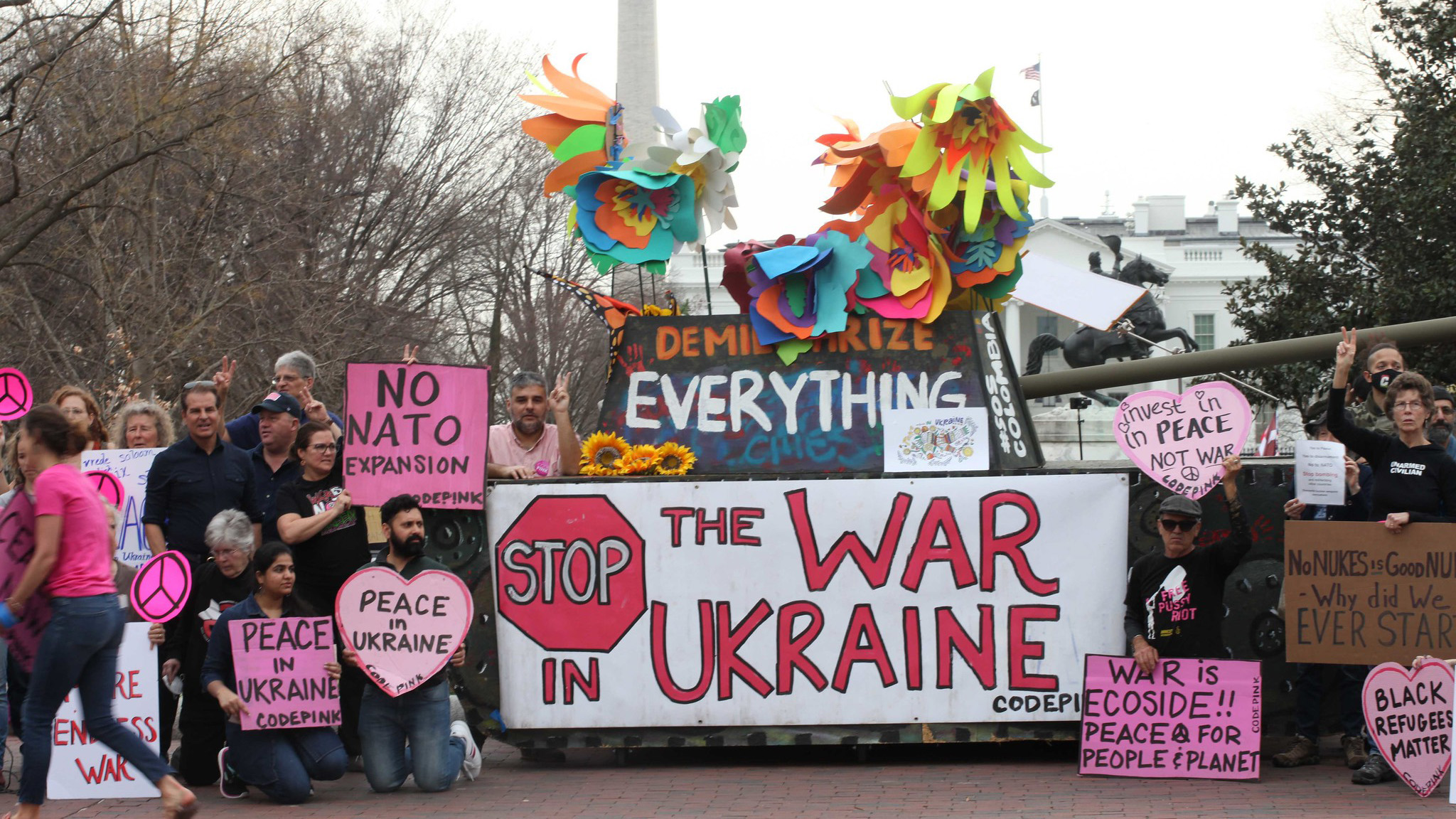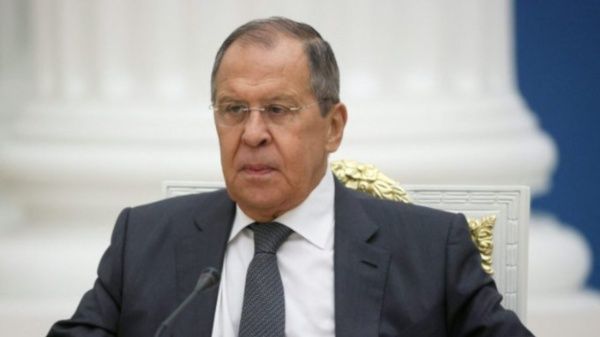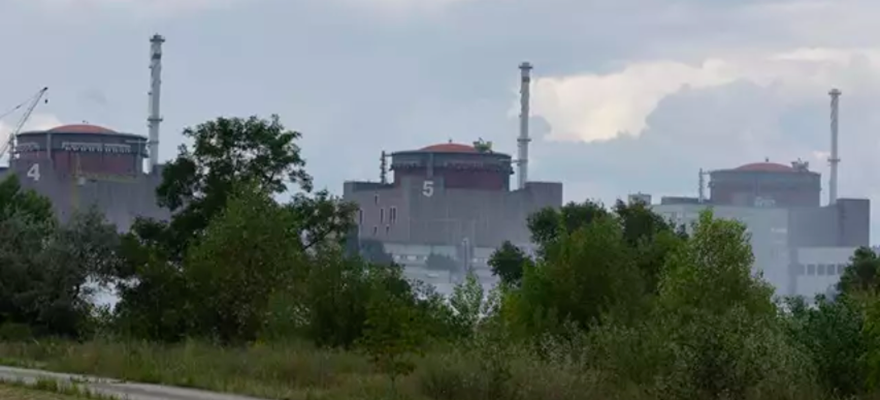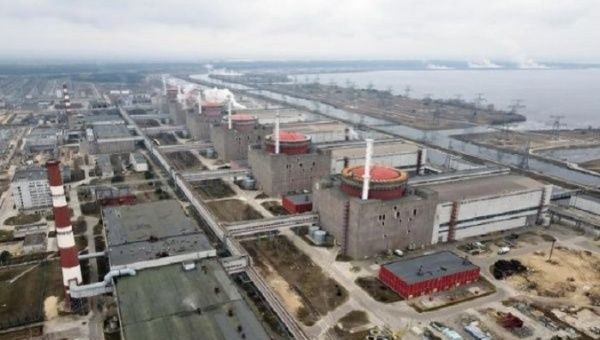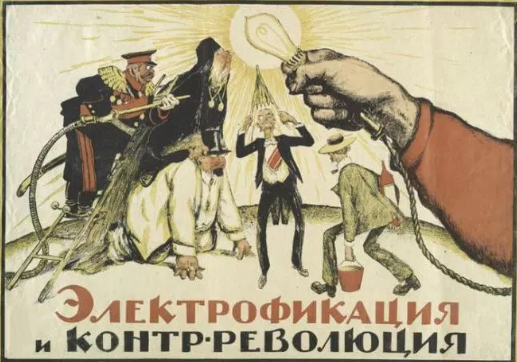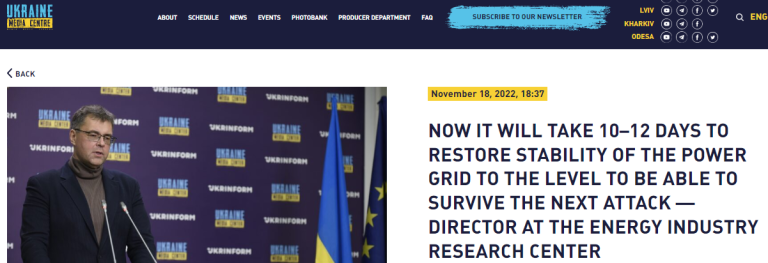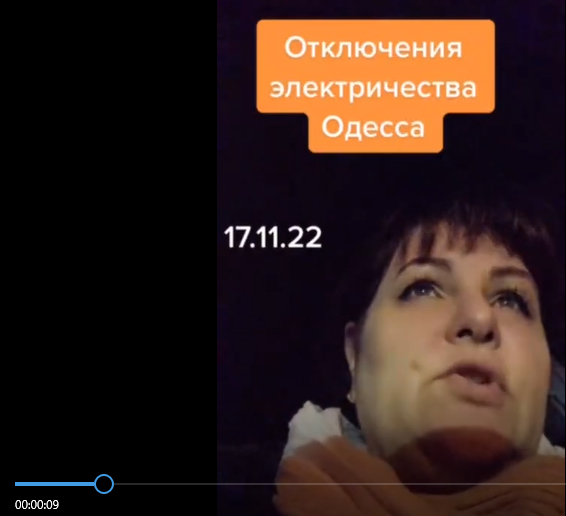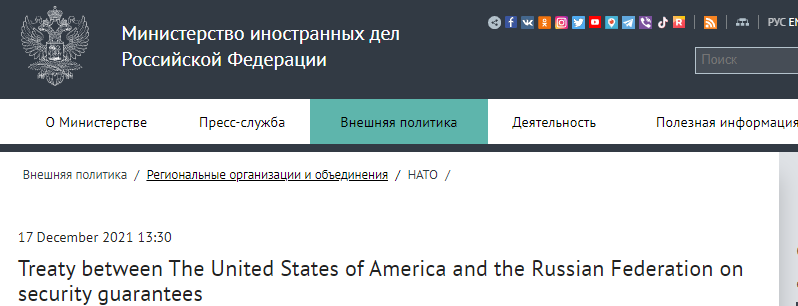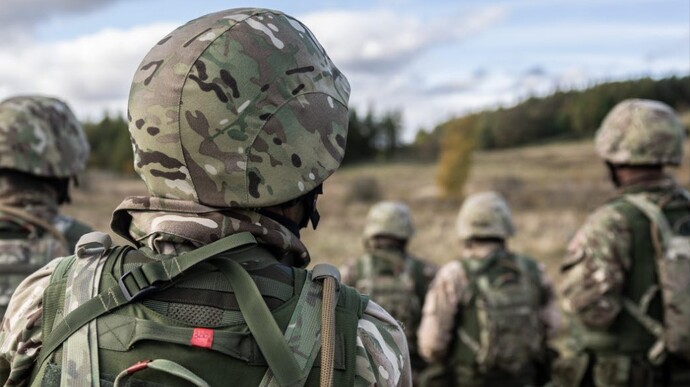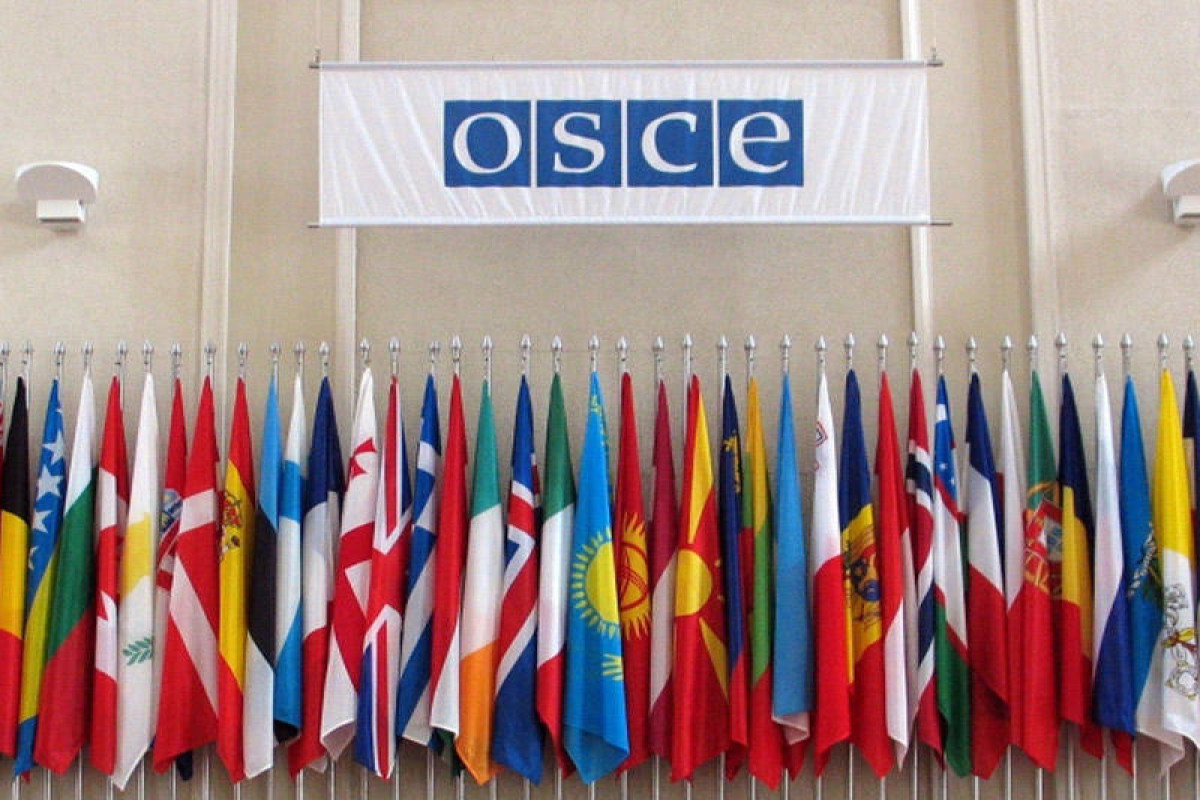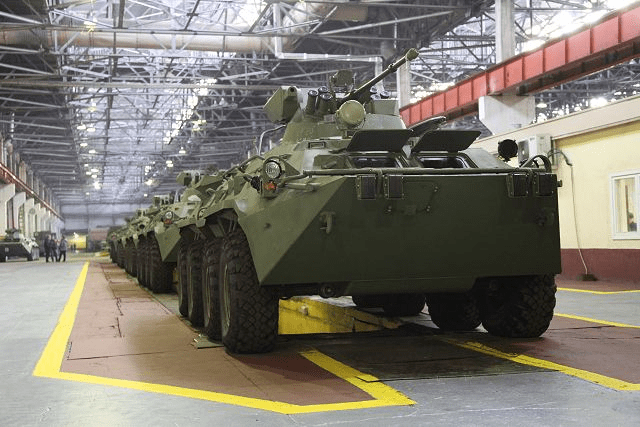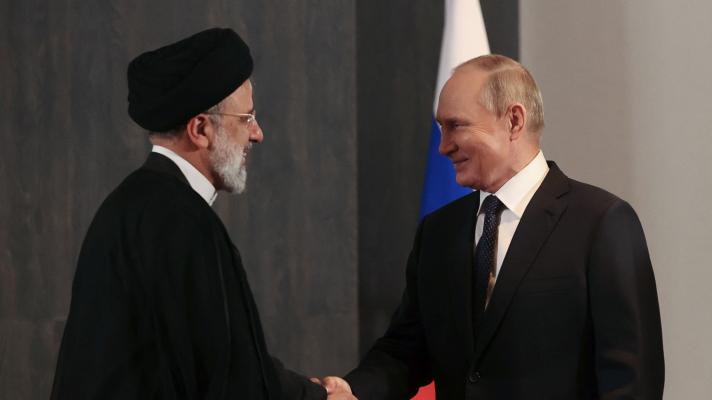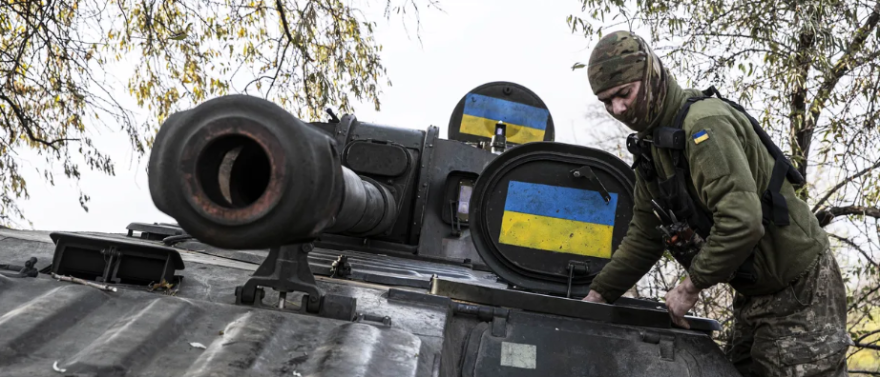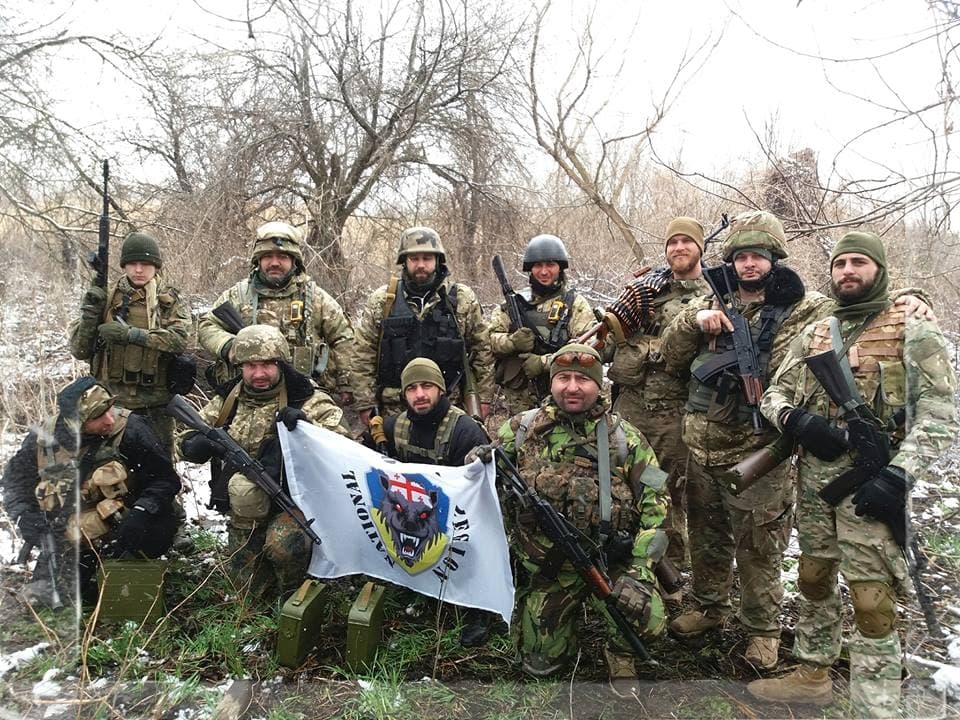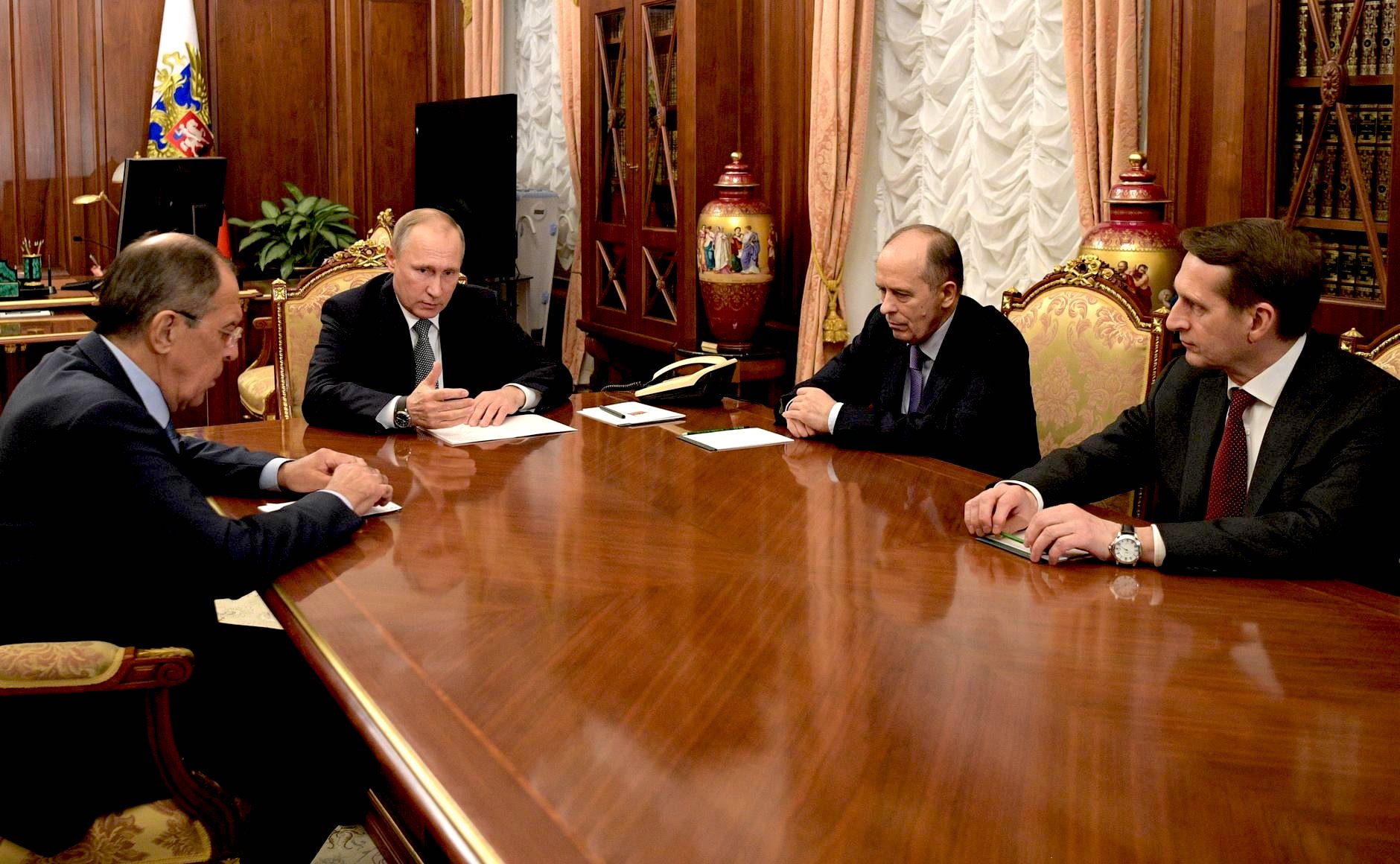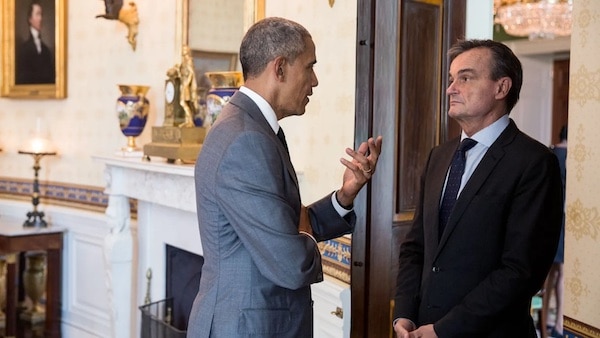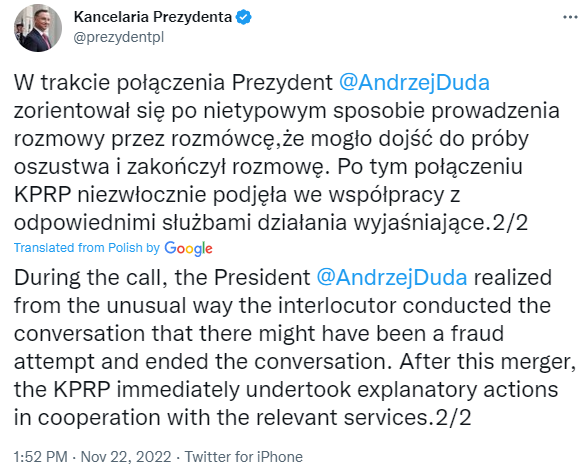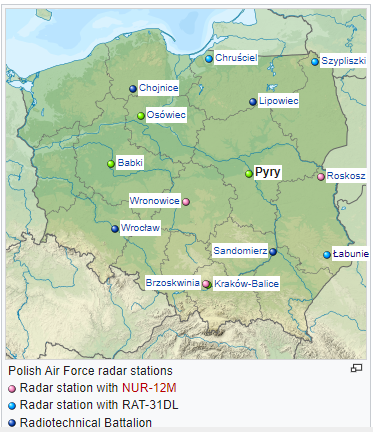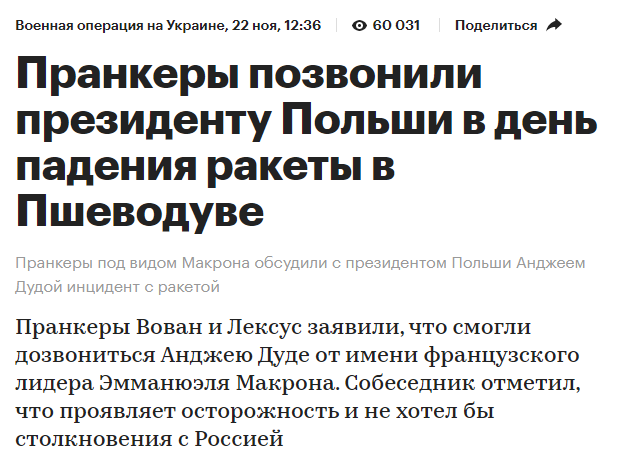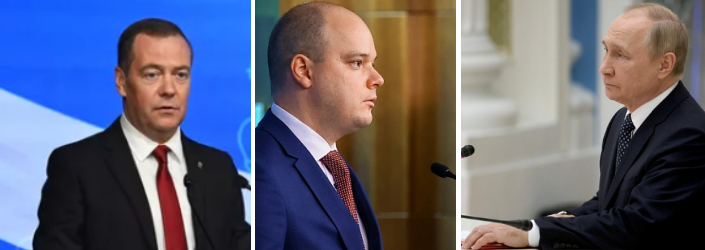POSTED BY @NSANZO ⋅ 11/17/2022

While there is speculation about the possibility of negotiations to freeze the conflict, an idea that part of the Biden administration seems to defend, judging by the constant leaks, Russia and Ukraine not only denied the possibility, but have increased their activities. Ukraine has resumed its attacks on the entire LPR contact line and is targeting Melitopol on the Zaporozhye front, while Russia has carried out one of the most powerful missile attacks against Ukraine's electricity distribution infrastructure. However, this attack has not led to the usual points of the Ukrainian argument.
Generally, the kyiv authorities highlight the attacks as a sign of Russian weakness in the face of its territorial losses, an idea that has been repeated in recent hours, but they add a whole other series of points that are not necessarily consistent with each other. Ukraine tends to boast, first of all, of the good work of its anti-aircraft shield, which generally intercepts, according to the Ukrainian version, a large part of Russian missiles and Iranian drones. Secondly, kyiv used to denounce the enormous damage caused by the small number of Russian missiles that hit their targets. Sometimes the number of Russian missiles that Ukraine admits to not being able to shoot down is less than the number of regions in which it claims damage from the explosions. To all this, Ukraine adds the final idea:
The impact of a device in the small town of Przewodów in Poland, an explosion that caused two innocent fatalities, has changed the discourse. On Tuesday night, the AP agencyhe claimed, citing a senior US intelligence official as a source, that a Russian missile had “crossed into Poland”. There was no doubt in his information, which was reproduced in all kinds of Western media, which understood this statement as confirmation by the United States of responsibility for the attack. Speculation quickly went from rumors about authorship to deciphering the circumstances in which it had occurred. The version of a failed missile going off course was the first to appear, but it was followed by accusations from Ukraine and the Baltics, alleging a deliberate attack.
Throughout the afternoon, this division between the US political and military authorities was repeated once more. While intelligence accused Russia of an attack through the press, the Pentagon refused to confirm responsibility for the attack. The fact that it is the same division between detractors and defenders of the search for a negotiation process between Russia and Ukraine to end the conflict or, at least, freeze it, is a sign of the importance of the incident.
In the divide between cautious and radical, the Baltic countries stood out early on. Neither the prudence of the Pentagon nor the announcement by Poland of the imminent invocation of Article IV of NATO, which only implies a collective consultation of a danger to the territorial integrity of one of the member countries, kept countries like Estonia waiting, which quickly they brought back the rhetoric of Article V. The Baltic countries were willing to appeal to the article invoking collective security because of what seemed from the outset to be a stray missile with no intent to hit a granary in Poland.
Over the last few hours, given the lack of doubts about the origin of the missile, which since Tuesday night was identified as an S-300 anti-aircraft missile used by both armies, the discourse has changed. Messages posted by Ukrainian officials such as Dmitro Kuleba, who claimed that he called the Russian claim that the explosion was caused by a Ukrainian S-300 missile a “conspiracy theory”, quickly became outdated.
In the morning, it was no longer a Russian attack but an attack with a Russian-made missile, a way of trying to confuse the population. Only the analysis of the remains of the missile and its serial number can finally determine its origin, although at this point neither the United States nor NATO doubt that it was not fired by Russia, but there are two main hypotheses: a Soviet-made missile or Ukrainian-made to the Soviet design.
Faced with its foreign partners, who have taken advantage of the situation to justify further militarization of the European continent with more US anti-aircraft systems on the "eastern flank of NATO", Ukraine continued throughout yesterday trying to blame Russia. Although a part of the government had already joined the maxim that Russia is guilty , since it was an attempt to shoot down a Russian missile that caused the incident or it was Russia that started the war (it did not, it was not Moscow but the Turchinov administration that launched the war in 2014), some of the most prominent figures in the Ukrainian regime clung to the idea of a deliberate Russian attack.
In the morning, when all his partners had already admitted that the missile had not been fired from Russia or by Russia, Volodymyr Zelensky reiterated the discarded version of the Russian attack in his speech to the G-20. In the afternoon, the Chairman of the National Security and Defense Council of Ukraine, the country's third authority, demanded a joint investigation and demanded that Ukraine be immediately allowed access to the site. Danilov was also willing to give his partners evidence "of the Russian track." Evidence that simply does not exist.
Hours before, in his daily communication, Zelensky had stated that what happened was "an attack against collective security." Even tougher than Zelensky, Defense Minister Oleksiy Reznikov was trying to use the death of two innocent civilians to rebuke his partners, calling "the attack" a "self-fulfilling prophecy" caused by the Alliance's refusal to "close the skies” of Ukraine.
The attempt to involve NATO in the war continues. However, this is possibly the most important part of what happened: given the possibility of claiming that Russia had used an S-300 as a land missile, an idea that has been used in the past based on the false thesis that Moscow no longer has missiles, NATO has been content to admit reality and avoid escalation. In the morning, Russia, which also introduced its own conspiracy theory, accusing Ukraine of a deliberate attack in pursuit of the invocation of Article V, appreciated Joe Biden's constructive stance, although it called in consultations with the Polish ambassador to blame to the country their accusations.
The incident shows two important aspects. First of all, Zelensky's appearances have once again shown that the Ukrainian discourse is limited to the constant accusation against Russia, whether it is based on reality or not. Although the incident always seemed easy to decipher, Ukraine has clung for hours to an argument based solely on the certainty that any accusation against Moscow is credible to its population and to the Western population. kyiv has acted in the same way in the case of its bombings against the Zaporozhie nuclear power plant and in the eight years of accusations of Russian bombings on the cities of the DPR and the RPL.
Secondly, the facts show that it is not only Russia that seeks to keep the conflict limited to Ukrainian territory. In the more than eight months of Russian intervention, Moscow has avoided any incident that could be considered an attack against NATO. What happened this week and the reaction of the US administration, first in its military representatives and later in the politicians, show that although much of the US establishment is ready to fight Russia to the last Ukrainian, there is no interest in extending the conflict. This attempt is limited, for the moment, to the Ukrainian government and the most radical countries in Europe, the Baltic countries or figures like Anders Aslund,
https://slavyangrad.es/2022/11/17/25960/#more-25960
Google Translator
******************
To end Ukraine conflict, NATO needs to stop its expansion
By Chen Weihua | China Daily | Updated: 2022-11-11 07:27
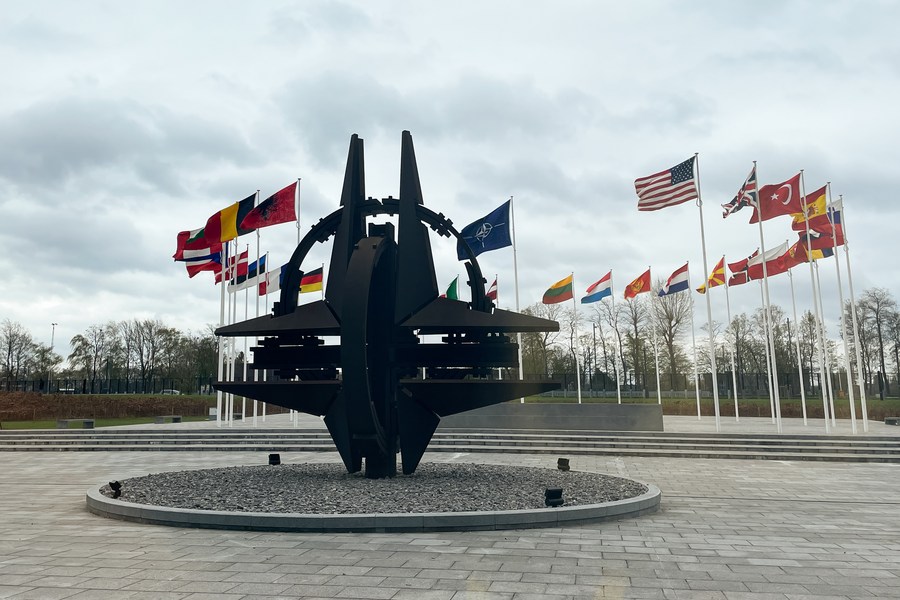
Photo taken on Apr. 6, 2022 shows a sculpture and flags at NATO headquarters in Brussels, Belgium. [Photo/Xinhua]
Ukrainian President Volodymyr Zelensky laid out new conditions on Monday for peace talks with Russia to end the conflict, changing his earlier stance that he would not hold talks with Russia until a new leader assumed power in the Kremlin.
Zelensky is said to have changed his stance under US pressure, perhaps on the advice of National Security Advisor Jake Sullivan, who visited Kyiv recently. Sullivan might have advised Zelensky to do so in the hope that it would make the international community believe that it is Ukraine, not Russia, which wants to resolve the conflict.
In a sense, it is an effort by Washington to deflect the growing criticism for its lack of diplomatic efforts to end the conflict, a conflict that has been punishing not only Ukraine and Russia but also the rest of the world, the developing nations in particular, by triggering energy price rise, increasing global inflation, causing food shortages, and weakening the global fight against climate change.
It is also a bid by the US to face the new reality at home given the declining public support for Washington's involvement in the conflict.
In a recent letter to US President Joe Biden, progressive members of the Democratic Party called for employing diplomacy to prevent a protracted war. They later retracted the letter, ostensibly fearing it would help the Republicans win more seats in the midterm elections.
A Pew survey in September showed people in the United States were less concerned than they were in the spring about Ukraine losing the conflict. Only 38 percent said they are extremely or very concerned about Ukraine, compared with 55 percent in May.
Also, according to a poll published by The Wall Street Journal on Nov 3, about 48 percent of the Republican respondents said the US was doing "too much" to support Ukraine, up from only 6 percent back in March.
Kevin McCarthy, a heavyweight in the House of Representatives, said last month that there would be no "blank check" for Ukraine if the Republicans won the midterm elections, sparking concerns that waning US support could negatively impact NATO allies.
The Russia-Ukraine conflict can only be solved through negotiations and diplomatic means. But the talks have to be not just between Russia and Ukraine but also between Russia and the US-led NATO, which has been deeply involved in the conflict and played a key role in triggering it.
In their reply to Russian President Vladimir Putin in January, the US and NATO refused to address Russia's core security concerns due to NATO's reckless eastward expansion in the past decades and the possible inclusion of Ukraine in the military bloc.
Recently, European leaders such as German Chancellor Olaf Scholz and European Council President Charles Michel urged China to use its influence to help end the conflict. But do they really believe China wields enough influence to help end the conflict than they do in urging NATO to halt its expansion, thereby resolving the conflict?
China has been consistent in its stance, calling for restraint and calm to avoid escalating the conflict. It has also been reiterating that the conflict can be ended only through a negotiated settlement, something sadly ignored by all the other parties.
Countries such as South Africa and India have also called for a political resolution to the conflict and offered help to hold peace talks, but have not been taken seriously by Ukraine, the US and its NATO allies.
As the Chinese saying goes, whoever starts trouble should end it. A negotiated settlement to the Russia-Ukraine conflict requires genuine efforts by the two sides as well as the US and its NATO allies. A fair and lasting negotiated settlement probably means there is no loser, and all the parties help to restore lasting peace.
The author is chief of China Daily EU Bureau based in Brussels.
chenweihua@chinadaily.com.cn
http://global.chinadaily.com.cn/a/20221 ... 29098.html
**************
SBU put Kadyrov on the wanted list
November 16, 22:53

The SBU put Kadyrov on the wanted list.
Kadyrov said that there was no need to look for him and that he could be found in Grozny and occasionally in Ukraine, where he visits.
https://colonelcassad.livejournal.com/7979507.html
Google Translator
***********
Russian Ministry of Defense Military Update November 16, 2022
Posted by INTERNATIONALIST 360° on NOVEMBER 16, 2022
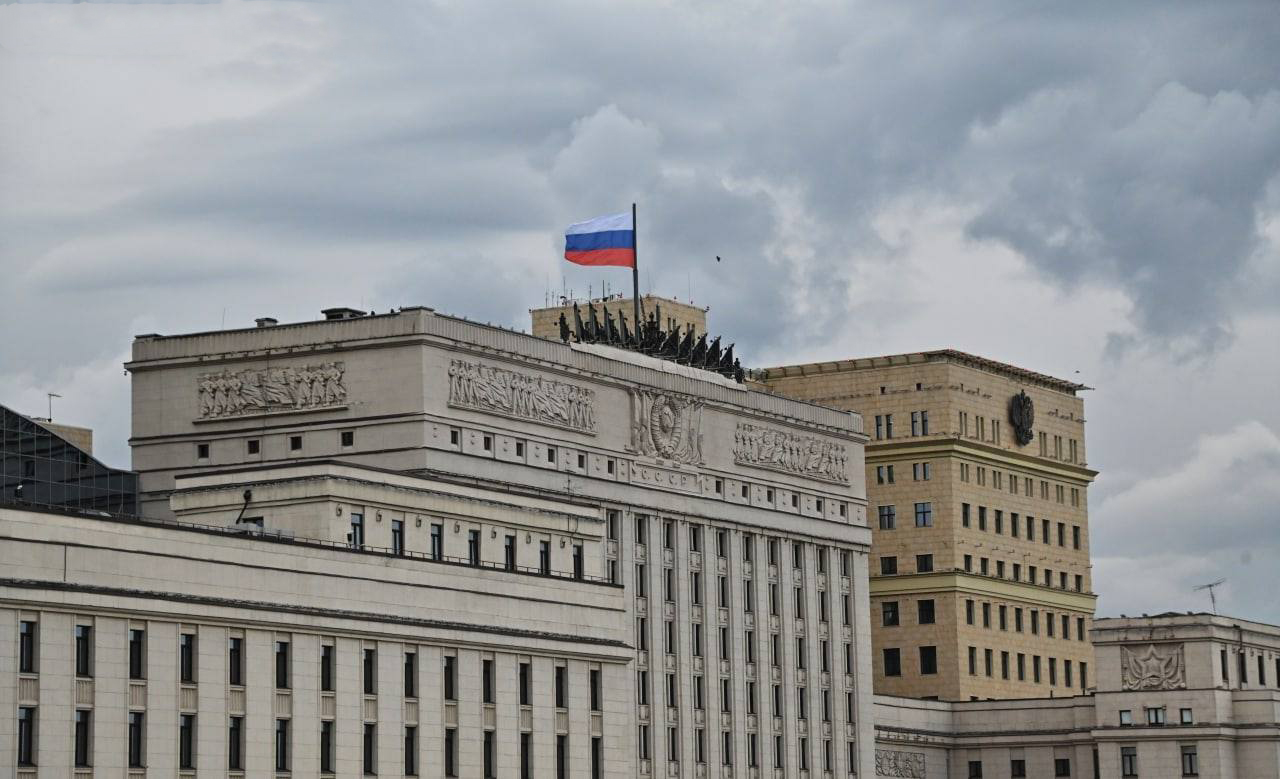
Summary of the Ministry of Defense of the Russian Federation on the progress of a special military operation in Ukraine ( 11/16/2022 )
On November 15, the Russian armed forces launched a massive strike by high-precision long-range weapons of air and sea based on the military control system of Ukraine and related energy facilities. The goal of the strike is achieved.
All fired missiles hit the intended targets. All objects are affected.
We want to emphasize – high-precision strikes were carried out on targets only in Ukraine and at a distance not closer than 35 kilometers from the Ukrainian-Polish border.
Photographs of debris found in the village of Pshedov, published in Poland on the evening of November 15, are uniquely unique identified by Russian specialists of the military-industrial complex as elements of an anti-aircraft guided missile of the S-300 air defense complex of the Ukrainian air force.
Statements various Ukrainian sources and foreign officials about the fall in the village of Psvedovv allegedly « Russian missiles » are a deliberate provocation in order to escalate the situation.
We also want to emphasize, – during a massive strike on November 15 with high-precision weapons of destruction at facilities in Ukraine – not a single missile strike was delivered at objects in the city of Kiev.
All the destruction demonstrated by the Kiev regime in the residential quarters of the Ukrainian capital is a direct result of the fall and self-destruction of anti-aircraft missiles launched by Ukrainian troops from Ukrainian and foreign air defense systems deployed within the city.
The Armed Forces of the Russian Federation continue to conduct a special military operation.
In the Kupyansky direction the attacks of the army aviation of the VKS of Russia disrupted the attempts of the offensive of three company tactical groups of the 14th and 92nd mechanized brigades of the Armed Forces in the direction of the settlements of Berestovoi, Kolesnikovka, Kharkov Region and Novoselovskoye of the Lugansk People’s Republic. Destroyed more 80 Ukrainian military personnel, six tanks, eight armored combat vehicles, two armored car and three self-propelled artillery installations.
In the Krasno-Limansky direction artillery fire and the active actions of Russian units per day reflected two attempts by company tactical groups of the Armed Forces to attack Russian positions in the direction of the village of Kolomyych, Lugansk People’s Republic. As a result of complex fire damage adversary lost more 100 Ukrainian military personnel killed and wounded, two tank and four armored combat vehicles.
In the Donetsk direction Armed Forces with counterattacks in the areas of the settlements of Kurdyumovka, Avdeevka, Staromikhailovka and Georgievka of the Donetsk People’s Republic unsuccessfully tried to stop the advance of the Russian troops. With the blows of artillery and the decisive actions of assault groups, the enemy was stopped and distracted. Destroyed more 160 Ukrainian military personnel, three tank, five armored combat vehicles, pickup and two car with ammunition.
In the South Donetsk direction Russian troops stopped the attack of the battalion tactical group of the Armed Forces in the direction of the settlement Stepnoe of the Donetsk People’s Republic. As a result of fire damage, the enemy is thrown to its original position. Destroyed more 65 Ukrainian military personnel and mercenaries, two infantry fighting vehicles, five armored vehicles and three car.
Over the past day, seven control points of the Armed Forces were hit by operational-tactical and army aircraft, missile forces and artillery in the areas of the settlements of Khrakhmalny, Berestovoye, Kharkov region, Stelmakhovka of the Lugansk People’s Republic, Sadovoye, Taginka, Zmievka, Kherson region, Kirovo Donetsk People’s Republic, as well as 94 artillery units in firing positions, manpower and military equipment in 185 areas.
In the area of the village of Novygorovka, Lugansk People’s Republic destroyed radar US Counterbattery Station AN / TPQ-50. In the area of the village of Orekhov, Zaporizhzhya region ammunition warehouse destroyed. During the counterbattery struggle in the area of the village of Kolesnikovka, Kharkov region two M777 artillery systems destroyed, manufactured by the USA.
In addition, in the area of the settlement of Mylovye, Kherson region destroyed Ukrainian self-propelled artillery installation « Promotion », and in the area of the settlement of Artemovka, Lugansk People’s Republic Ukrainian multiple launch rocket fire rocket fire « Grad » destroyed.
Operational and tactical aviation of the VKS of Russia in the area of the village of Novoselovka, Zaporizhzhya region Mi-8 helicopter shot down air forces Ukraine.
Air Defense per day destroyed three unmanned aerial vehicles in the areas of the settlements of the Paradise Kherson region, the Petrovsky Donetsk People’s Republic and the Krasnorechensk Lugansk People’s Republic.
Besides, intercepted 11 shells of multiple launch rocket systems « HIMARS » and « Hurricane » in the areas of the settlements of Kalanchak and Novonikolaevka, Kherson region.
Total from the beginning of a special military operation destroyed: 333 plane, 177 helicopters, 2514 unmanned aerial vehicles, 388 anti-aircraft missile systems, 6644 tank and other armored combat vehicles, 892 multiple launch rocket fighting vehicles, 3587 field artillery and mortars, as well as 7240 units of special military automotive equipment.
Russian Ministry of Defence
https://libya360.wordpress.com/2022/11/ ... r-16-2022/
Russian Missiles Strike Ukrainian Infrastructure, Ukrainian Missiles Strike Polish Farm
Posted by INTERNATIONALIST 360° on NOVEMBER 16, 2022
Update on Russian military operations in and around Ukraine for November 16, 2022
– Russia continues its campaign targeting Ukrainian infrastructure with missiles and drones;
– A recent barrage consisted of over 90 missiles, significantly degrading Ukraine’s power grid;
– The West has said since April Russia was running out of missiles, yet large-scale use of missiles continues;
– Russia is also now using long-range precision kamikaze drones meaning Russia appears to have a growing number of long-range precision weapons;
– During the recent barrage it appears at least 2 Ukrainian air defense missiles missed their targets and struck civilians in Poland;
– After claiming Russia is a threat to Europe, it is a terrible irony that Ukraine is responsible for the first strike on NATO territory since Russian operations began in late February;
References:
CNN – Wave of Russian missiles hit Ukraine after Zelensky outlines conditions for peace at G20 summit:
https://edition.cnn.com/2022/11/15/wo…
Guardian – Poland considers calling meeting of Nato ministers after missile strike:
https://www.theguardian.com/world/202…
Politico – Russia is running short of long-range missiles, say Western officials:
https://www.politico.eu/article/russi…
Financial Times – Russia running short of precision missiles, say western officials (April 2022):
https://www.ft.com/content/f81234cc-c…
Reuters – Poland blast caused by missile fired by Ukrainian forces at incoming Russian missile – AP:
https://www.reuters.com/world/poland-…
Combat Approved (YouTube) – The Heavenly Forces / Russian Aerospace Defense / Pantsir missile system / Igla / Verba:
CNN – US studying how to modify powerful armed drone as Ukrainian demand grows:
https://edition.cnn.com/2022/11/14/po…
https://libya360.wordpress.com/2022/11/ ... lish-farm/
Support for the Kiev Regime is Suffocating the UN
Posted by INTERNATIONALIST 360° on NOVEMBER 16, 2022
Mikhail Gamandiy-Egorov

Despite Western pressure on many countries, support for Kiev at the UN level is drastically declining, as the Western media itself admits. This is confirmed by the recent vote in the UN General Assembly promoted by the Atlanticist establishment to give the Kiev regime Russian reparations.
The recent Western-Kiev resolution voted at the UN General Assembly is a major setback for Kiev and its main sponsors. In addition to being non-binding, it shows the loss of international support for the pro-Western coalition, and this while the Atlanticist elites maintain an extraordinary pressure on the international community.
With 94 votes in favour of the resolution, 13 votes against, 74 abstentions and 11 no-shows, despite its adoption – the pro-Western coalition has received less than half the votes of the UN member states. The Washington Post confirms this by reporting that this is one of the lowest levels of support for Kiev in the five resolutions on Ukraine passed by the UN General Assembly since the start of Russia’s special military operation on February 24.
Western consternation is certainly heightened by the fact that among the 13 countries that openly voted against the Western-Kiev initiative was the People’s Republic of China – a permanent member of the UN Security Council, the world’s leading economic power in terms of GDP at purchasing power parity and quite simply one of the major international powers. China’s vote of open opposition to the Western resolution came alongside Belarus, Central African Republic, Cuba, North Korea, Eritrea, Ethiopia, Iran, Mali, Nicaragua, Syria, Zimbabwe and of course Russia.
It should be noted that the Western elites have repeatedly said in the past that they must collect no less than 100 votes in favor of the resolutions concerning Ukraine, otherwise it would be considered a failure. They have often forgotten to recall that even in votes where the said coalition managed to obtain a much larger number than in the most recent General Assembly, the demographic weight of the nations represented was never to the advantage of the Western regimes. And now this reality is becoming much more visible.
One thing is certain. This vote will have largely demonstrated once again that the West has no value in claiming to speak for the international community. This is all the more so because, unlike the Atlanticist regimes, Moscow and Beijing do not need to intimidate, threaten or blackmail the UN member states to obtain the necessary votes. This is in stark contrast to the Western establishment.
The collective Western hope that the isolation of Russia could be achieved in the long run – not only does not materialize, but is de facto ridiculed, given all the efforts of the nostalgic unipolarists. And this without even mentioning the economic problems that are increasingly affecting the instigators and promoters of unilateral sanctions. The boomerang effect in all its splendor.
https://libya360.wordpress.com/2022/11/ ... ing-he-un/
Stopping Support to Kiev the Best Way to Respond to Recent Attack in Poland
Posted by INTERNATIONALIST 360° on NOVEMBER 16, 2022
Lucas Leiroz
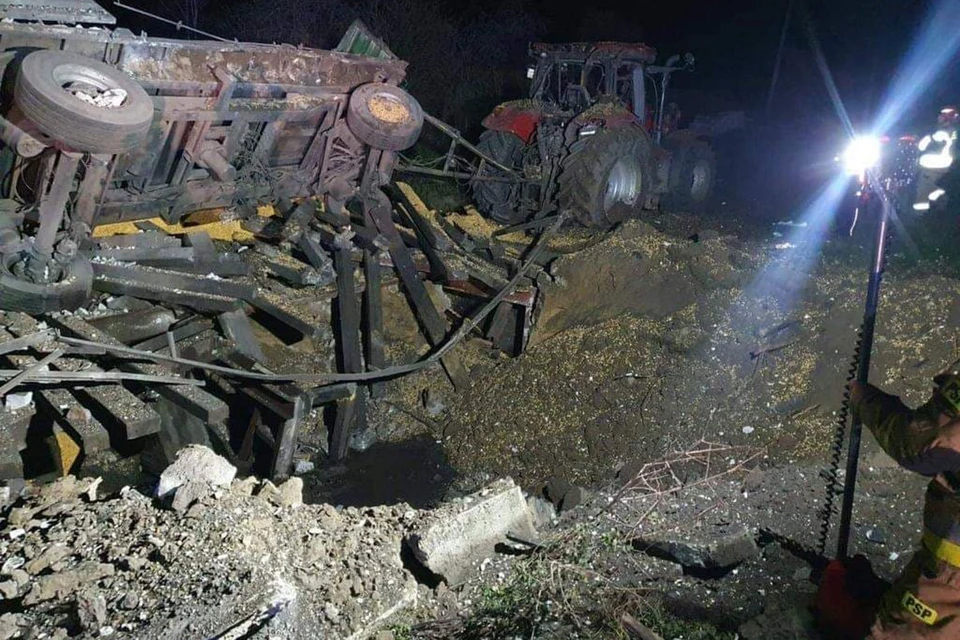
The explosion occurred near the border town of Pshedvodov. Photo: remiza.com.pl
The recent missile attack that hit Poland, resulting in two deaths, caused a serious worldwide concern. The possibility of Polish authorities invoking Article 5 of NATO to mobilize a “response” to Russia raised fear, since this hypothesis would be a kind of official declaration of WWIII, in addition to being able to escalate to the nuclear level quickly. However, the warmongers’ plans seem to have failed
The “Russian attack” narrative is increasingly discredited. US President Joe Biden said it is “unlikely” that Moscow is to blame for the action. More that that, even Poland’s President Andrzej Duda stated “We currently have no evidence that the missile was fired by the Russian side.” He also said that a missile was likely a Russian-made weapon fired by a Ukrainian air defense system.
Fortunately, it appears that the international escalation of the conflict is once again about to be avoided. NATO has shown no willingness to try to push forward the baseless rhetoric that Russia attacked a member of the alliance. However, what is not yet clear is what will happen after the conclusion of the investigations. Preliminary data concludes that the missile used in the bombing is not one of the types of equipment employed by Russia in the special operation. In addition, reports point out that the Russian bombing closest to the hit region on the day of the attack took place more than 70 km away from the affected Polish village.
In fact, there only seems to be one possible scenario: Ukrainian forces bombed Poland. This obvious fact poses a challenge to Western authorities, which consists of understanding the reasons why Kiev would have taken such an attitude. There are two central hypotheses: either it was an accident, or the Ukrainian government deliberately assaulted Poland in a false flag operation to bring NATO into the conflict.
On previous occasions, Kiev had already carried out several false flag maneuvers to blame the Russians for war crimes committed by the Ukrainian forces themselves as well as justify receiving more military and financial support from the West. Furthermore, it is unlikely that an accident occurred in that specific region, considering the distance between Polish territory and the Russian targets that Ukrainian forces plan to hit with their artillery.
So, faced with an evident Ukrainian false flag, which generated fatal victims among citizens of a NATO country, the Polish attitude should be quite incisive, prioritizing its interests and the dignity of its people over its alliance with Kiev. Warsaw should stop all form of military and logistical support to the neighboring country and call on the entire Atlantic alliance to do the same.
In fact, the same logic that some officers want to apply against Russia, invoking Article 5, could be applied against Kiev, if Ukrainian responsibility is proven. NATO’s internal regulations point out that the alliance must declare war on any country that attacks one of its members. Such a rule is not exclusive to Moscow, and can be perfectly applied also to “partner” states, if they invade the alliance’s members.
Obviously, this scenario is unrealistic, considering the high degree of cooperation between Westerners and Ukrainians. But it is not necessary for such a drastic measure to be taken for the objective of responding to provocations to be achieved. It is enough for NATO to commit itself to immediately cease all support for the Ukrainian neo-Nazi regime, allowing local forces to face Russia with their own resources, without foreign money, weapons or mercenaries.
This attitude would be enough to guarantee the resolution of the Ukrainian issue in the short term, as the regime would run out of strength to continue prolonging the confrontations and soon the situation would be resolved. In this scenario, both sides, Russia and the West, could even jointly negotiate new peace terms and territorial configurations in the region, to serve the interests of both sides and prevent further escalations in the future.
However, NATO does not seem really interested in effectively mitigating the consequences of the conflict. Although the Ukrainian act, whether intentional or accidental, was harmful to an alliance member, the most likely thing is that Kiev will not suffer any consequences from NATO.
It is expected, however, that the citizens of Poland and other NATO countries will be less and less happy with this situation, as they see their territories violated and their infrastructure boycotted (as in the Nord Stream case) by the West-Kiev axis and are forced to simply accept this type of humiliation without any responses, only in the name of the “need to help Ukraine”. So, the more NATO harms its own citizens, the more its unpopularity will grow.
Lucas Leiroz, researcher in Social Sciences at the Rural Federal University of Rio de Janeiro; geopolitical consultant.
Kiev regime missiles hitting Poland – incompetence or false flag?
Drago Bosnic
On November 15 at approximately 3:40 PM CET (Central European Time) at least one missile hit the village of Przewodow in Poland, close to its border with Ukraine. The Western mainstream propaganda machine was quick to start blaming Moscow. A senior US intelligence official even told the Associated Press news agency that “a Russian missile has killed two people in NATO member Poland.” Polish Prime Minister Mateusz Morawiecki called an urgent meeting to discuss the incident, while the Polish Foreign Ministry issued a statement claiming that a “Russian-produced rocket fell on the village of Przewodow at 3:40 PM local time, near the border with Ukraine.”
Still, as soon as the footage of the missile wreckage was shown, it became clear that the weapon in question was fired by the Kiev regime forces. Multiple US officials admitted this was the case. According to the AP, “key questions around the circumstances of the missile launch remained amid the confusion caused by a blistering series of Russian airstrikes across the nearby border in Ukraine, none larger than who fired it. Russia denied any involvement in the Poland blast. Three U.S. officials said preliminary assessments suggested the missile was fired by Ukrainian forces at an incoming Russian one amid the crushing salvo against Ukraine’s electrical infrastructure Tuesday. The officials spoke on condition of anonymity because they were not authorized to discuss the matter publicly.”
The statement clearly contradicts the initial claim that the missile was Russian. Even the Polish government, which can be described as anything but sympathetic to Russia, issued a rather ambiguous press release, mentioning that the missile was “Russian-made” instead of just Russian. Most of the Kiev regime’s arsenal, particularly its surface-to-air missile (SAM) systems are Soviet/Russian-made and were inherited from the USSR. In addition, US President Joe Biden himself commented that it was unlikely the missile was fired by the Russian military.
And indeed, the location of the incident is nowhere near the engagement range of the system which can fire the missile. Preliminary reports and the footage acquired by various sources indicate that it was most likely fired from an older iteration of the Soviet-era S-300 SAM system. The Kiev regime forces operate several versions, but the vast majority belong to the S-300P/PS/PT series. The missile in question was most likely 5V55K, with a maximum engagement range of approximately 45 km. Modernized versions of the post-Soviet era were never deployed in Ukraine, while the closest Russian air defense units are at least 150-200 km away, in Belarus, and operate much more advanced systems such as the S-400.
In addition, it makes no sense for the Russian forces to fire a surface-to-air missile at a time when their long-range missiles are targeting Kiev regime’s strategic assets. On the other hand, it does for the Neo-Nazi junta forces, as their air defenses would certainly have the motivation to try and shoot down incoming Russian cruise missiles. Still, this didn’t prevent the Kiev regime foreign minister Dmytro Kuleba from claiming that “Russia now promotes a conspiracy theory that it was allegedly a missile of Ukrainian air defense that fell on the Polish territory. Which is not true. No one should buy Russian propaganda or amplify its messages. This lesson should have been long learned since the downing of MH17.”
On the other hand, Polish President Andrzej Duda urged the public to “remain calm” and issued on Wednesday a statement claiming that a missile was likely a Russian-made weapon fired by a Ukrainian air defense system. “We currently have no evidence that the missile was fired by the Russian side,” he said.
He also said that the Polish military and other state services such as the police, firefighters and border guards raised readiness, adding that “the military is increasing the monitoring of national airspace as investigators are still working to establish the causes of the explosion.” Duda also stated that “there are no indications that the incident would be repeated.”
And yet, the Kiev regime is adamant that anyone claiming this wasn’t fired by Russian forces is a “conspiracy theorist”, which obviously also includes the presidents of the US and Poland. “Hitting NATO territory with missiles… This is a Russian missile attack on collective security! This is a really significant escalation. Action is needed,” Zelensky was fuming during his Tuesday night video address. He claimed that it’s “only a matter of time before Russian terror goes further.” At best, the claims are indicative of the futile attempts to justify the Kiev regime’s incompetence. At worst, they imply that the Neo-Nazi junta is desperate to get NATO directly involved in the crisis.
The same could be true for certain Polish military and government services, as the implications that the much-touted “Patriot” batteries stationed along the border failed to intercept the incoming missiles mean that this either calls into question the system’s capabilities or indicates complicity.
In any case, regardless if the incident was accidental or a possible false flag aimed at escalating the conflict, the perpetrators are quite obviously unaware of the potentially cataclysmic consequences of their actions. Whatever interest they may have in seeing World War Three happen will fade into oblivion the moment strategic thermonuclear weapons start flying.
https://libya360.wordpress.com/2022/11/ ... in-poland/
************
From Cassad's Tlegram account:
***
Colonelcassad
for November 16, 2022

In addition, the Armed Forces of Ukraine are preparing for a large-scale offensive in this direction. Up to two artillery brigades were deployed to the line of contact.

***
forwarded from

Rybar
Since spring, Rybar's team has been raising the issue of the need for systemic fire damage on the objects of the Ukrainian railway network and the advisability of strikes on bridges across the Dnieper.
One of these strikes was inflicted on June 26, 2022 on the railway bridge in Cherkassy .
Despite the light cloudiness, the image shows a visible point of the support pylon at the site of the collapsed span. This is a clear confirmation of the fact that, if desired , it is possible to disable bridges across the Dnieper . It's all about calculating the right amount of forces and means, as well as choosing the right point of impact.
Therefore, we once again publish a list of important objects of the railway network of Ukraine:
***
Colonelcassad
The head of the city council of Lublin, after Ukraine's blow to Poland, called for a review of Poland's policy towards Ukraine:
"I absolutely do not understand the actions of our President and government... It is obvious that this is a Ukrainian missile. It is obvious that this is a provocation on the part of the Ukrainian authorities. The missile could not have been launched 100 km in the opposite direction by mistake. armaments to Ukraine, to intimidate Europe with terrible Russia, so that civil society demanded from the governments of European countries to increase assistance to Ukraine.Today, our president should not reassure us with fairy tales like "it was not so much a rocket explosion, but an explosion of fuel that was there" and "it was accident", but to make it clear to V. Zelensky that Poland will no longer tolerate such behavior of the Ukrainian authorities! I urge you to reconsider Poland's position on this war in the event of another crossing of the red line!"
https://t.me/s/boris_rozhin
Google Translator
************
Zelenski Seeks To Start a Conflict Between Russia and NATO
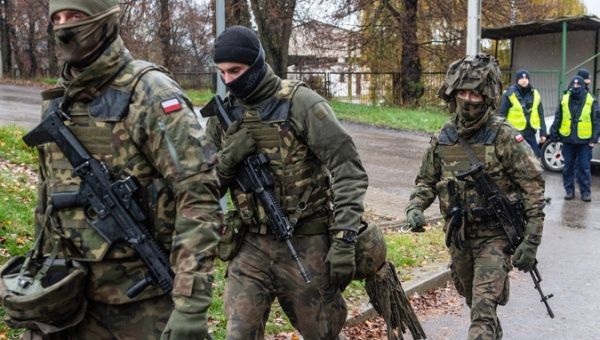
Polish Army soldiers and Polish Police during operational activities in Przewodow, Lublin Voivodeship, Poland, 16 November 2022. | Photo: EFE/EPA/WOJTEK JARGILO POLAND OUT
Published 16 November 2022
Statements by Ukrainian President Vladimir Zelensky about a missile falling in Poland represent an attempt to provoke a direct conflict between NATO nations and Russia, Russian Ambassador to the UN Vasily Nebenzia said Wednesday.
"These are statements by a man who cannot but have access to the information that it was Ukrainian missiles launched by Ukrainian air defense systems that crossed into Polish territory (...) That means that this is not just an intentional attempt at disinformation but rather a conscious attempt to involve NATO, which is waging a proxy war ('proxy war' in English) with Russia in Ukraine, in a direct conflict with our country," the diplomat said.
On Wednesday, Zelenski said he did not doubt that the missile was not Ukrainian.
Several Polish media reported on Tuesday the impact of two missiles in the town of Przewodów, about seven kilometers from the Ukrainian border, which caused two fatalities. Still, Polish authorities later spoke of a single missile.
The Polish Ministry of Foreign Affairs limited itself to saying that the projectile was of "Russian" manufacture, a designation that refers to former Soviet production.
The Russian Defense Ministry indicated that on Tuesday, they attacked targets at least 35 kilometers from the border with Poland, ruled out any connection between the published photos of alleged fragments with their arsenals and described the reports of certain Polish media on the impact of alleged Russian missiles as "an intentional provocation aimed at increasing tension."
Polish President Andrzej Duda declared on Wednesday that there is no indication that the missile strike in Poland was a deliberate attack against the country and admitted that there is no evidence that Russia launched it, but, on the contrary, "it is most likely an anti-ballistic missile used by the Ukrainian defense forces."
In his turn, the Secretary General of the Atlantic Alliance, Jens Stoltenberg, admitted that preliminary data confirmed that Ukrainian air defense systems had reached Poland.
https://www.telesurenglish.net/news/Zel ... -0017.html
